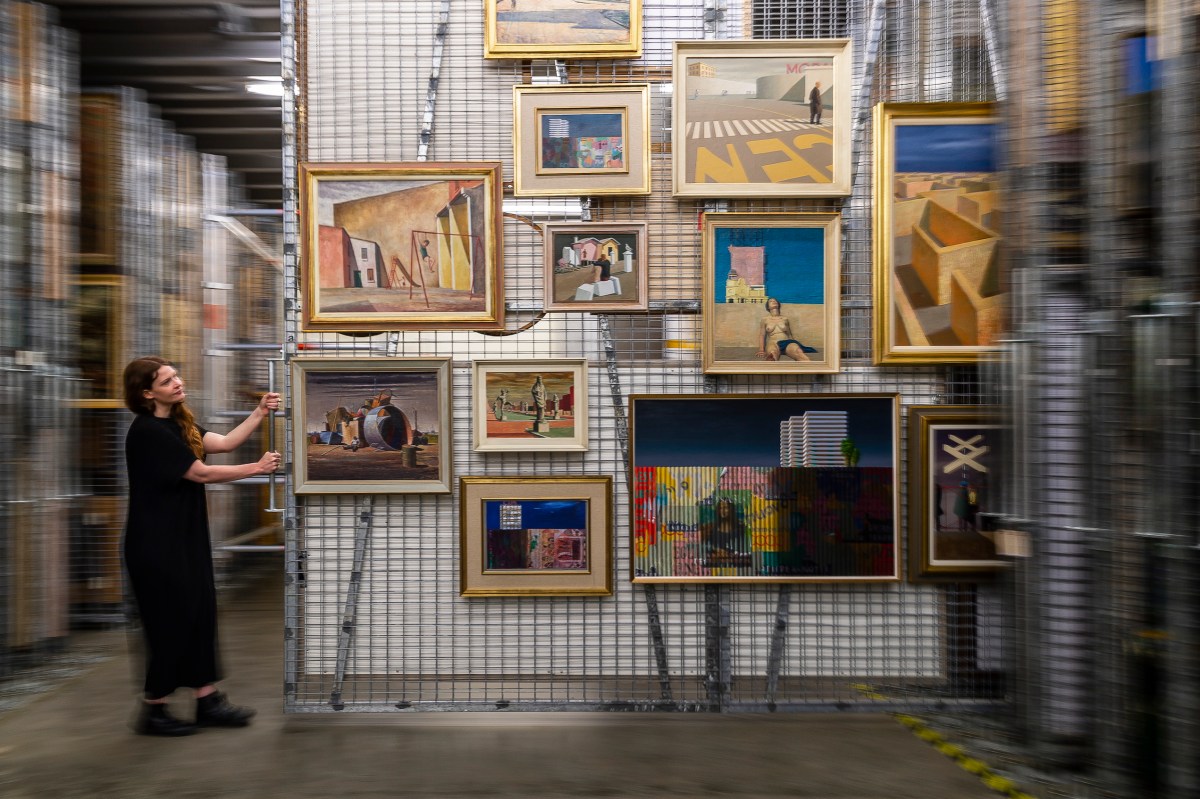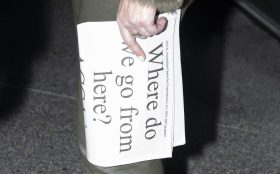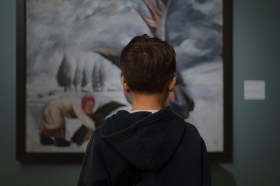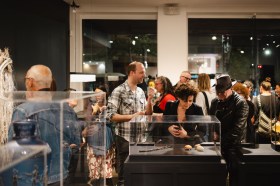In 2021 we had a pandemic. In 2022 we were back. And in 2023, perhaps we forgot.
The level of burnout this year has been intense, as arts programming has been delivered at double time, and with a feverish push to get the last of the backlogs cleared.
In terms of the themes that percolated to the top of visual arts programming, expanded textiles (note Julia Gutman won the 2023 Archibald Prize with a textile portrait), Pacific arts, AI and performance in the gallery space repeatedly popped up. The art market felt a little leaner, costs were on the rise, and generally there was not a lot of money around. And while that has not, as yet, tipped over into a dull hysteria, there is a sense that the sector is feeling a little cautious heading into 2024.
That said, it was a very busy year for blockbusters and major exhibitions – all big-dollar projects, often augmented by high-level commissions and acquisitions. That has been a big win this year, providing income for artists and offering plenty to bring people back in to our galleries.
In terms of the big news tickets and scandals that stood out for the visual arts in 2023, we bring you “the big list” for another calendar year.
The ‘big’ moments in the visual arts
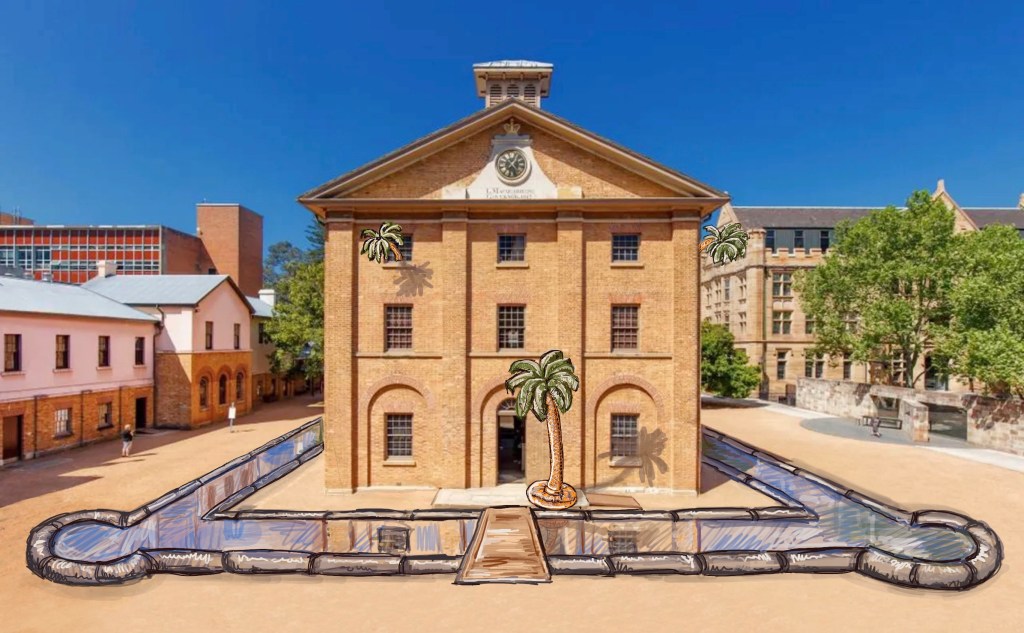
Biggest reversal: Controversial? Yes. Unprofessional? Yes. What organisation gives back upwards of $500,000, after it has been signed off by government, is in the bank and an artist has agreed to the commission? We are talking about the cancelling of Alex Seton’s Hyde Park Barracks Commission in July this year.
Biggest repatriation: In September, Manchester Museum (UK) returned 174 culturally significant artefacts to the Aboriginal Anindilyakwa community of Australia’s Northern Territory. There were other stories of repatriation this year, in an upward and welcomed swing.
Biggest correction: In February, the National Gallery of Australia (NGA) was looking to be in a perilous position. The ‘National Gallery of Australia Chair projected $265 million shortfall over 10 years, jobs could go’ reported ABC News. With 40 years of funding neglect critically impacting infrastructure, it was a welcome correction in May with a budget allocation of $535.3 million extra over four years for nine major cultural and historical institutions.
Biggest Aussie moment: Melbourne Now opened in March for its second edition at NGV (National Gallery of Victoria) Australia: Ian Potter Centre (the last was 10 years ago) – a power-boosted survey of over 200 Victorian artists, designers and creative collectives (should it be called Victoria Now?), while The National 4 opened a month later in Sydney, (across multiple venues) with a skew towards female artists. It was a rare tandem moment that ensured the focus was on Australian artists in 2023.
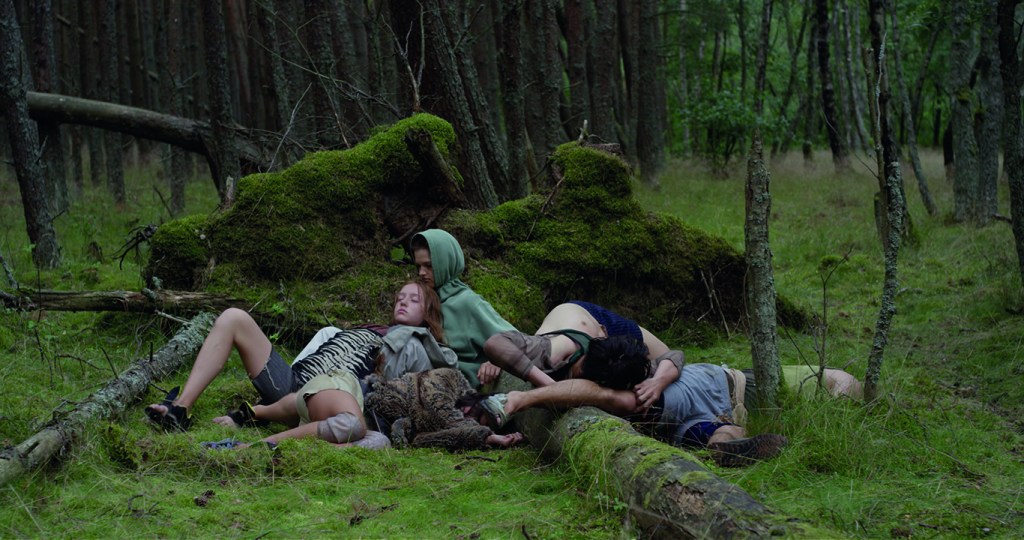
Biggest themed show: Portraiture is hardly a new theme, but the exhibition Identity: Portrait 23 took an expanded approach to the genre in a refreshing way. It was presented by the National Portrait Gallery (NPG) in Canberra. And from one of the oldest genres to the newest, a worthy mention must go to the top themed exhibition in 2023 – We are electric, an exhibition about energy and centring eco-critical conversations at UQ Art Museum.
Biggest scandal: One that continues to have an impact, was the claim of “white hands on black art” that broke mid-year, and toppled trust within the APY Lands Arts Centre Collective (APYACC) management. ArtsHub spoke with artists to garner their views earlier this year. The situation was a trigger for the NGA to do a review of works in its cancelled exhibition, The Ngura Pulka Epic Country (due to the controversy). Its report was tabled in August. The issue remains topical, and has been referred to the Office of the Registrar of Indigenous Corporations (ORIC) and the Australian Competition and Consumer Commission. APYACC Manager Skye O’Meara has yet to step down. Turning over to an administrator is an option in 2024.
Biggest unveiling: Wintjiri Wiru had been years in the making. Getting it right was crucial. In May, 1000 drones took to the skies over Uluṟu in the largest ongoing drone show in the world.
Biggest new initiative: In a win for all Australians, the NGA kicked off its new $11.8 million initiative to loan artworks. While the first wave received some criticism, once those in the sector got their heads around the scheme, all recognised its merits and opportunities to drive local tourism and community connection.
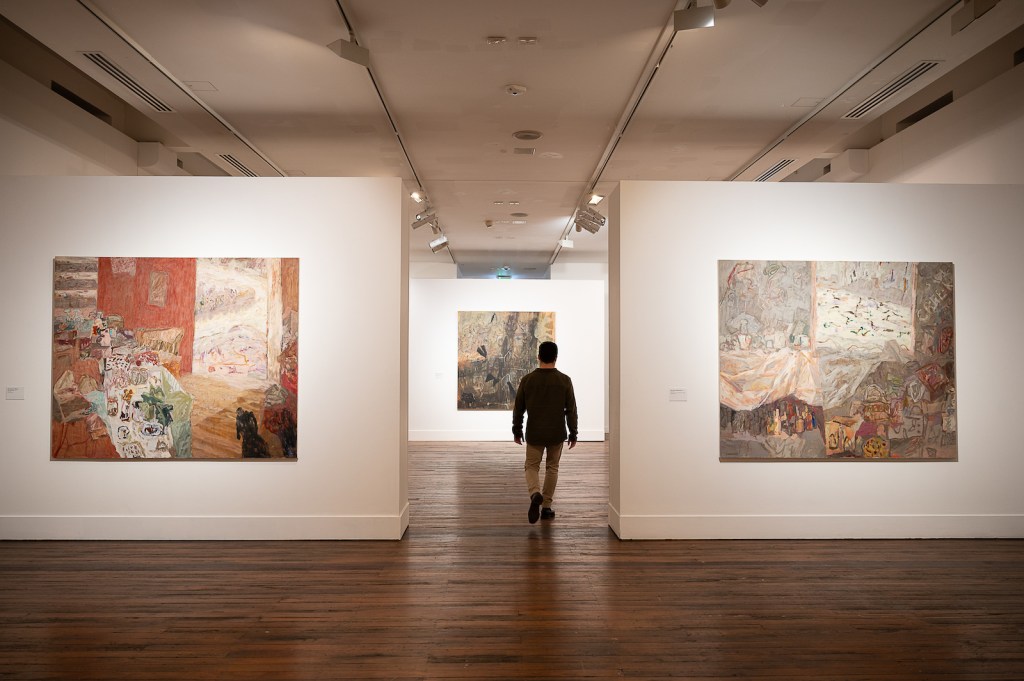
Biggest solos: There were a lot of solo exhibitions in 2023! A lot. Some of the highlights were Buxton Contemporary’s surveys on Peter Tyndall and Nadine Christensen, while another Victorian gallery, Tarrawarra Museum of Art, took a deep dive look at the practice of Peter Booth and Brent Harris (who also had a solo at Auckland Art Gallery this year).
Carriageworks presented Salote Tawale, while Queensland Art Gallery | Gallery of Modern Art in Brisbane (QAGOMA) did tandem survey exhibitions of Michael Zavros and eX de Medici. Mosman Art Gallery paid a nod to Imants Tillers, while UTS Gallery looked Justine Youssef’s work, The Drill Hall in Canberra turned to James Drinkwater and the National Art School had a cracker show with Elisabeth Cummings.
Regionally, Wollongong Art Gallery presented a fantastic survey of Daniel Mudie Cunningham’s work mid-year, while Orange Regional Gallery took a look at David Serisier, Campbelltown Art Centre surveyed Savanhdary Vongpoothorn career, Murray Art Museum Albury looked at Newell Harry’s work and Geelong Art Gallery took a dive into John Nixon’s prints with Four Decades, Five Hundred Prints.
Biggest belly punch: News that Griffith University Art Museum had been mooted to become a storage area for the film school, was a big hit for the visual arts sector in November, and showed the value – or should we say lack of value – placed on the role of galleries in learning institutions by “pen-pushers”.
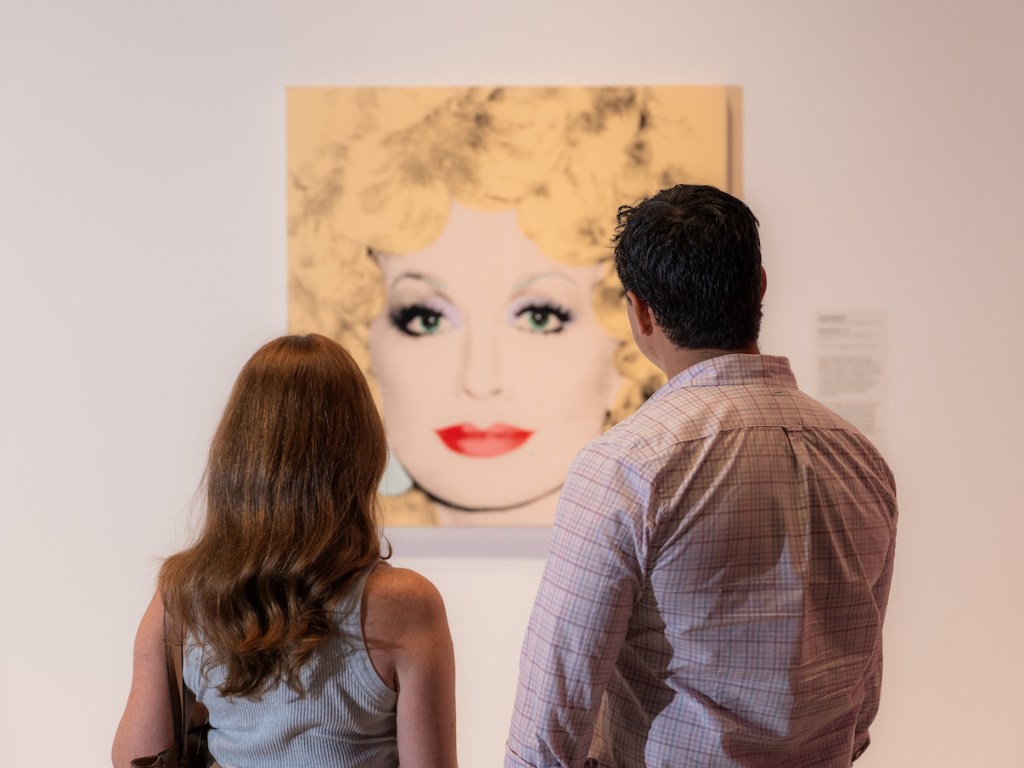
Biggest punch above weight: A clear coup, the billon-dollar Mugrabi Collection of Pop art at HOTA – Home of the Arts on the Gold Coast – was a stellar show and an Australian first. It was followed later in the year by another international blockbuster, Sneakers Unboxed: Studio to Street, from London’s Design Museum.
Biggest touring exhibition: JamFactory’s national touring exhibition, New Exuberance: contemporary Australian textile design – Textiles in Art, Design and Fashion did a super job in shifting the lens on, and dialogue around, the impact and perceptions of textiles this year. The tour continues into 2024.
Big rebrand: After 30 years of championing contemporary Australian photography, the Monash Gallery of Art became the Museum of Australian Photography in March. Oh and then, of course, there was that other small rebrand – Creative Australia.
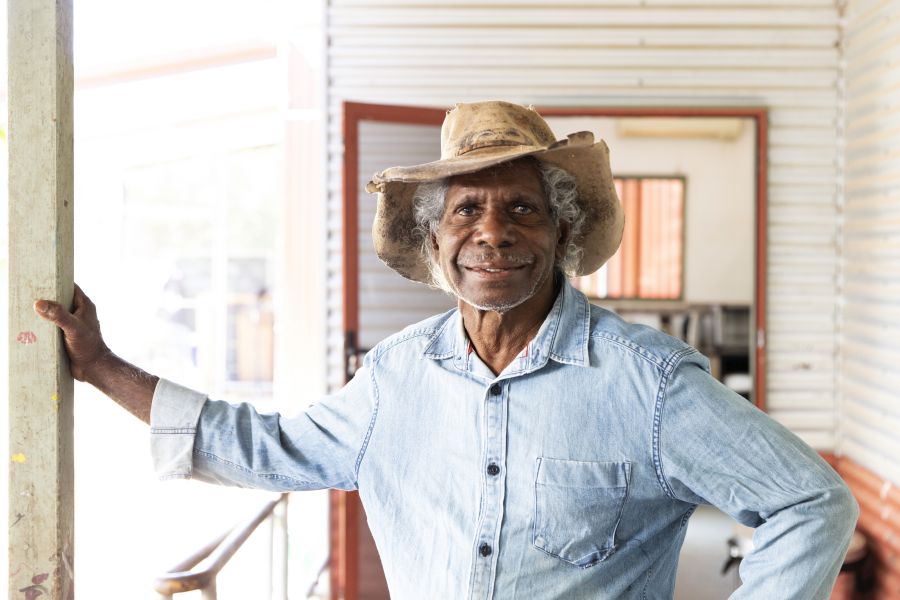
Biggest legal win: The 73-year-old Gooniyandi artist Mervyn Street played a leading role in a $180 million class action against the Western Australian State Government over historic stolen wages to Aboriginal people in modest terms.
Biggest growing trend: Teen takeovers are hardly new, but in 2023 they escalated to new heights. ArtsHub took a look at the growing trend, and also how it is moving beyond our cities.
Biggest yawn: Yep, undoubtedly it is Australia’s Egyptomania. In June, WA Museum Boola Bardip’s presented the Discovering Ancient Egypt exhibition, in November the Australian Museum opened Ramses & the Gold of the Pharaohs, while in September, the NGV announced its Melbourne Winter Masterpieces series blockbuster, would be Pharaoh, from the British Museum. Yawn.
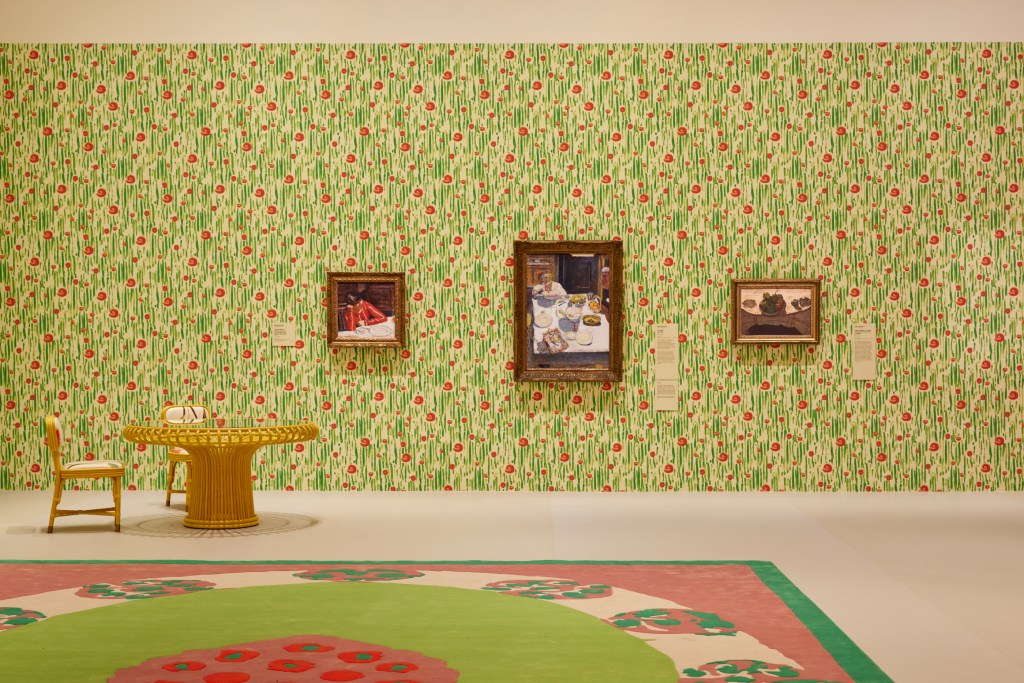
Biggest museum design: Everyone was excited to hear India Mahdavi was designing the space for NGV International’s Pierre Bonnard winter blockbuster exhibition. But when the doors opened, opinions were divided. The verve for exhibition design (or perhaps “over-design”) reached a saturation point in 2023, with crazy colour accents, palette pedestals, funky brick displays, ratchet straps – you get the idea – leaving many craving a return to the white cube.
Biggest sog: Last year it was Lismore. In February this year, Kimberley Art Centres had to navigate flood recovery, with many artists displaced and access issues causing prolonged concern. While in South Australia, Samstag Museum of Art had to deal with a flood ‘of biblical proportions’, which closed the galleries for nine months, just two weeks out from the gallery’s Adelaide Festival launch.
Biggest attendance: A year on since opening last December, the Art Gallery of New South Wales (AGNSW) | Sydney Modern has reported that its visitor attendance for the first year of operation tipped over two million.
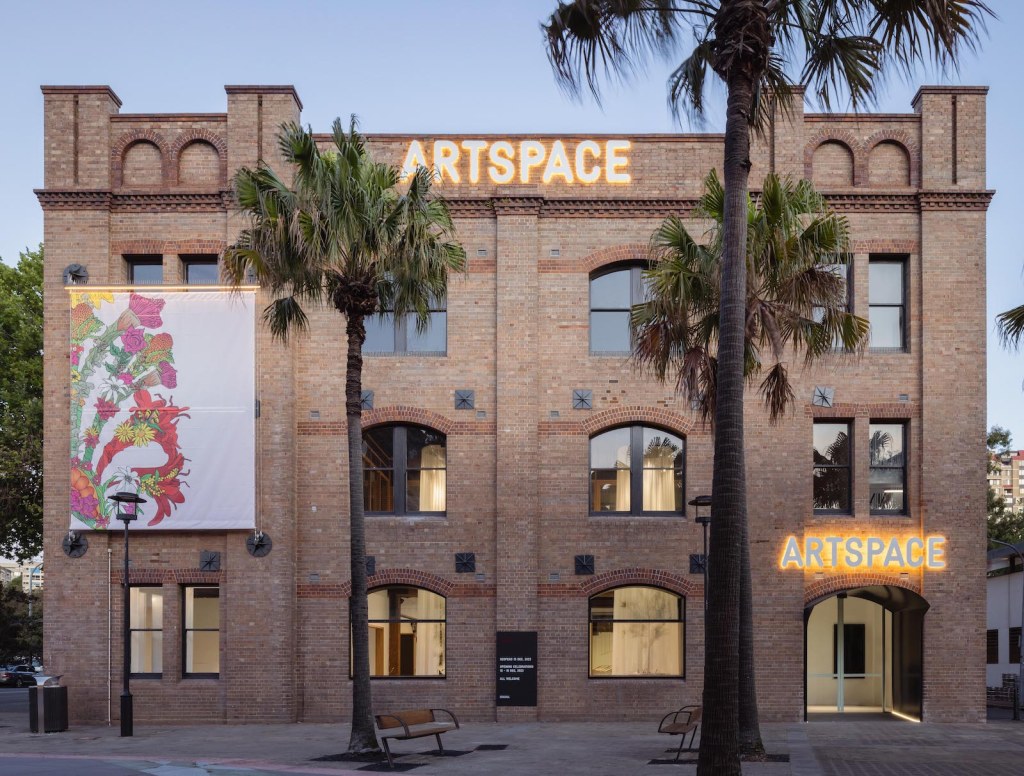
Biggest facelift: Undoubtedly, Artspace in Sydney has thrown open its doors this month as a revitalised space for 21st engagement and global recognition. It also opened with a new 35-year lease in place, securing its future. Also worthy of a nod is the Melbourne Holocaust Museum (MHM), which opened in November following a three-year rebuild and redevelopment.
Biggest rug pull: Shock rippled across the visual arts sector in December, with news that celebrated gallerist Anna Schwartz had terminated her 35-year relationship, representation and friendship with artist Mike Parr, over comments on the Israel/Palestine conflict in a performed art piece.
Read: Rise in the cost of living impacting artists
Biggest unethical badge: This month has seen a swag of artists outing Melbourne’s RED Gallery in Fitzroy North for unprofessional conduct. The Gallery changed hands in 2019, and artist relationships have taken the brunt of poor professional direction.
Biggest blockbuster: 2023 was a year weighted with blockbusters. The Art Gallery of South Australia (AGSA) presented the largest exhibition of Frida Kahlo’s work to come to Australia. NGV International unveiled Pierre Bonnard Designed by India Mahdavi in May, and rounding out the year was Kandinsky at AGNSW, Tacita Dean at the MCA and Fairy Tales at QAGOMA. But perhaps the one that offered a freshness and buzz as the hottest blockbuster of the year, is Louise Bourgeois at Sydney Modern.
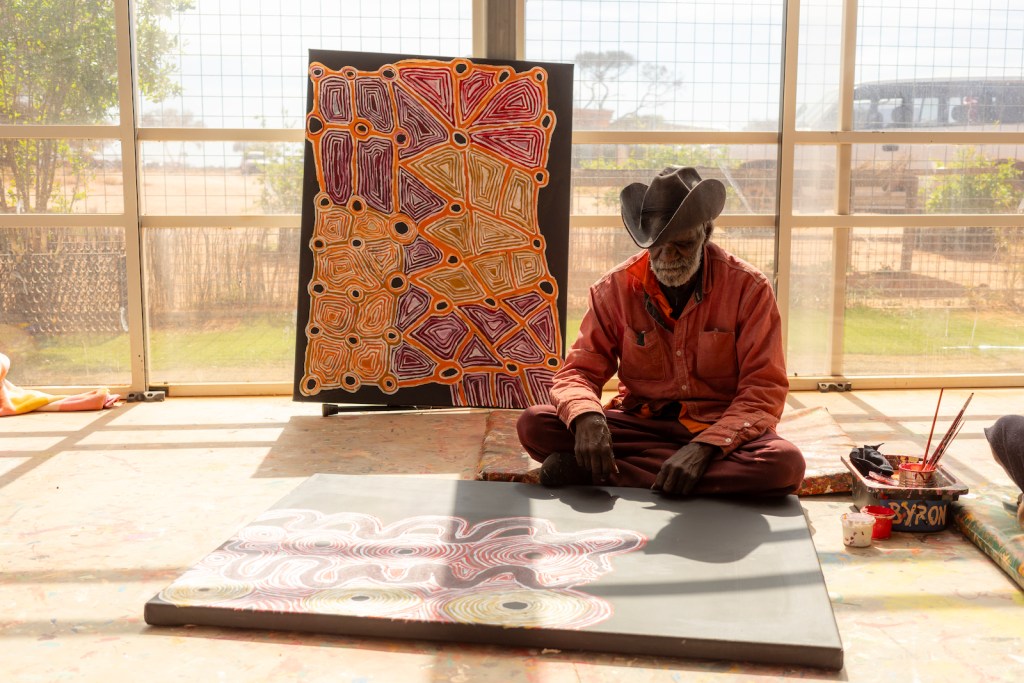
Big First Nations:
With the celebration of First Nations arts and culture a central pillar of Revive – the new National Cultural Policy – 2023 saw some of that come into effect. Some highlights this year were:
- Archie Moore announced as 25th Venice Biennale representative.
- Melbourne leads in opening a dedicated First Nations Arts and Culture Centre, and new home for the Koorie Heritage Trust.
- Launch of the UPLANDS digital project, bringing art centres closer to all.
- Megan Cope’s site specific installation at Sydney Opera House.
- Jessica Clark curated a genealogy between 10 new commissions by First Nations artists, crafting an exhibition for the third Yalingwa commission at ACCA, which positioned audiences to succumb to in-betweenness.
- Incredible solo exhibition by Vincent Namatjira, central to this year’s Tarnanthi Festival at AGSA.
- 30-year survey exhibition Karla Dickens: Embracing Shadows at Campbelltown Art Gallery.
- Emily Kam Kngwarray exhibition at the NGA, repositioning this Australian icon.
- Design revealed for Australia’s First National Aboriginal Art Gallery at Mparntwe/Alice Springs, putting gathering spaces first and countering negative press that has plagued the centre this year.
- Documentary on First Nations artist and activist Richard Bell, You Can Go Now, created by UTS Professor and filmmaker Larissa Behrendt.
- And in May, Richard Bell asked Tate Modern (UK) to Pay the Rent with the presentation of his Embassy project in its prestigious Turbine Hall.
- James Tylor: Turrangka… In The Shadows exhibition at UNSW Galleries was another highlight.
- A celebration of 20 years of ceramic artwork at Ernabella Arts Centre – Australia’s oldest arts centre.
- Tony Albert has been appointed as the inaugural Fondation Cartier pour l’art contemporain First Nations Curatorial Fellow, in a partnership with the Biennale of Sydney, while Kimberley Morton will consult for Tate (UK).
Best “unsung” show: While I want to give a nod to AGSA’s exhibition, Andy Warhol and Photography: A Social Media for its fresh take on an icon, one of the strongest exhibitions this year that could have received greater attention was Hoda Afshar’s Curve is a Broken Line at the AGNSW. It was a serious and stunning body of work, beautifully presented.
Read: 26 new theatres and galleries opening in Australia in 2023, and beyond
Biggest (meant to be) secret: In the last week of the Museum of Contemporary Art (MCA)’s exhibition, Do Ho Suh, a visitor accidentally stumbled into his Hubs on display. It was reported by some media sources as a ‘drunk partygoer’, questioning the role of for-hire events. Luckily the show closed a couple of days later, and the damage was minimal.
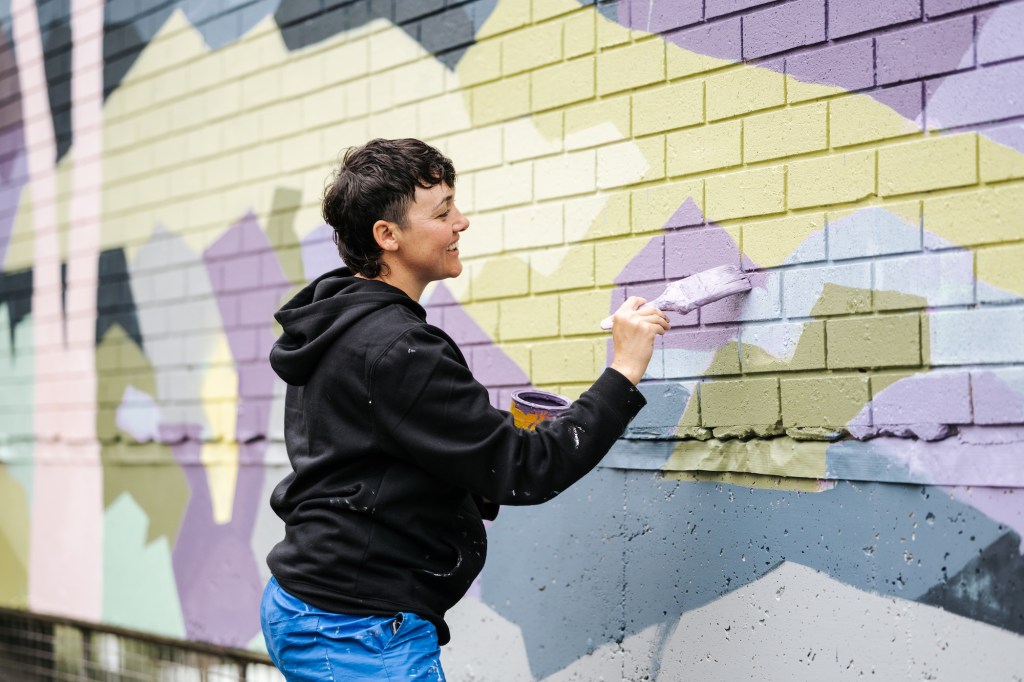
Biggest policy problem: This year, insurance providers decided to change how artists qualify for cover under auspicised organisations, with a staggering outcome, especially for those artists and designers working in the public domain.
Biggest endorsement: In February, ArtsHub spoke to Art Money CEO Paul Becker upon the announcement that Christie’s auction house had made an equity investment in the Australian-owned platform, via its new enterprise, Christie’s Ventures. The art entrepreneur also threw down roots with a London version of the loan scheme this year.
Biggest policy: In the last gasps of the year, the NSW Government announced its new 10-year arts, culture and creative industries policy, stating, ‘Governments must find new ways to treat artists and those in the creative and cultural economy with more respect.’
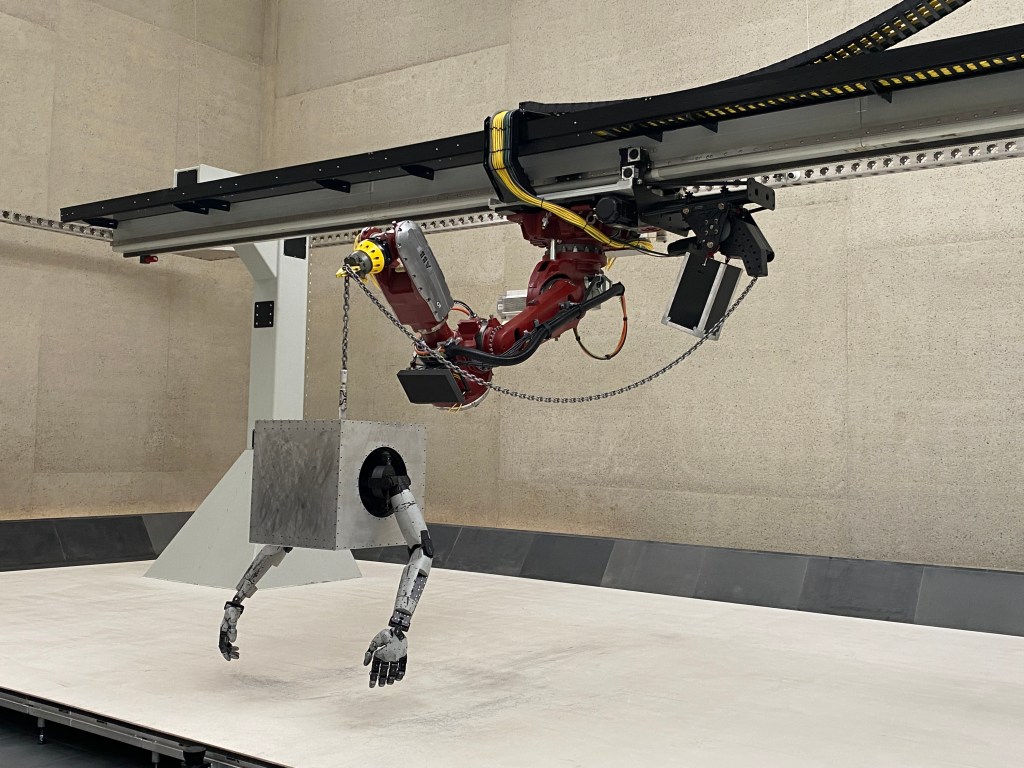
Biggest acquisition: Pitching in the vein of Jackson Pollack’s Blue Poles, the NGA in December unveiled its $6.67 million acquisition of US artist Jordan Wolfson’s robotic installation, Body Sculpture. With an artist globally viewed as controversial, it was a bold choice … and sure to be questioned by some. The same month, AGSA proudly celebrated its major acquisition for the year – the painting titled The Swing, 2020-23, by British painter Chris Ofili – and an Australian collection first.
Biggest thank you: The National Association for the Visual Arts (NAVA) recently launched Love Your Local, a new toolkit designed to help artists, makers and designers engage with Local Government Authorities (LGAs).
Biggest phoenix rising: Last September, the Chamber of Arts and Culture WA appointed consultants for a review to find a more sustainable business model. At the time, Chamber Executive Director Kim Jameson said, ‘Maintaining the status quo in terms of the Chamber and how it is structured and operates is not an option.’ In October, it announced it had secured another two years of funding. A phoenix rises indeed.
Biggest warning: In September Dark MoFo announced it would pause its multi-arts festival, citing rising costs. This month, Head On Photographic Festival raised concerns in a statement that it is unsure it will be able to continue in the current financial climate. The MCA has also started a second tier of paid exhibitions this year, to ensure its sustainability.
Big anniversaries: In May, ArtsHub took a look at some of the arts organisations and festivals celebrating milestone anniversaries in 2023.
Read: Why an anniversary counts … literally
Biggest international presence: Designed as an international touring exhibition, Ever Present is an exercise in self-determined exhibition making. ArtsHub was on the ground in Auckland (NZ) for its launch, to consider what artworks were selected, and speak loudest to our Indigenous neighbours.
Biggest regional gong: 2023 could not pass without a big nod to Wagga Wagga Art Gallery, which devoted its entire exhibition program to discussions around our climate crisis. Champions!
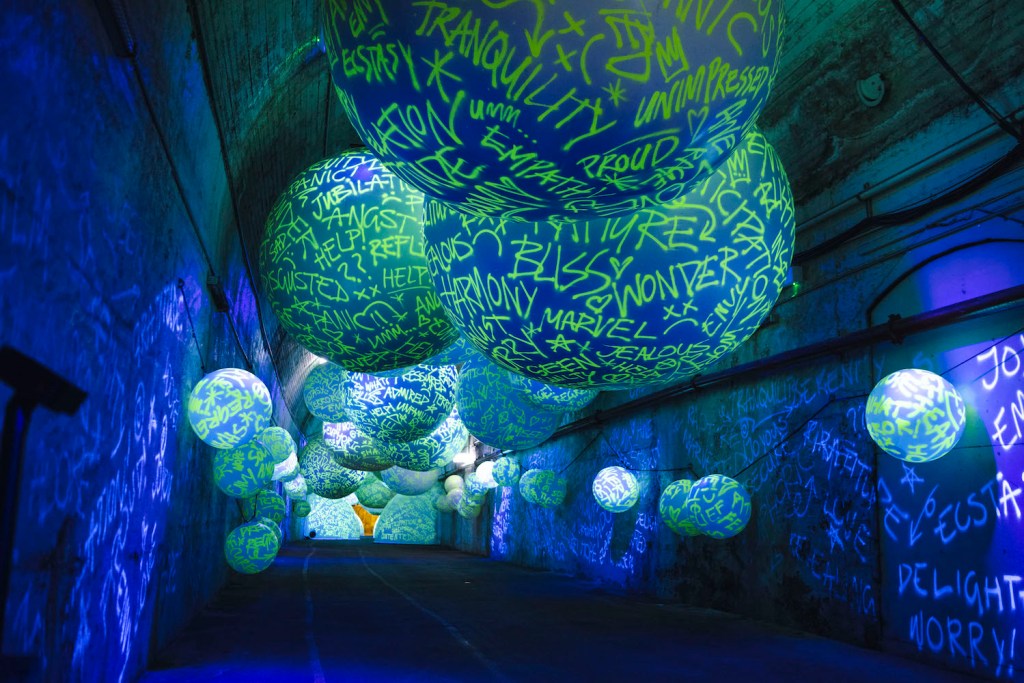
Biggest tech immersion: For Vivid Sydney in May, Dark Spectrum captivated audiences as an immersive light installation that took over Wynyard Tunnels beneath the city.
Biggest backlash: In June, Hannah Gadsby’s curated exhibition at the Brooklyn Museum (US), It’s Pablo-matic: Picasso According to Hannah Gadsby got a thrashing. ArtsHub took a look at why.
Biggest Queer: Much of the programming in February in NSW was related to Sydney WorldPride 2023, with major Queer exhibitions curated by University of New South Wales (UNSW) Galleries, National Art School (NAS) Gallery, Australian Design Centre and Powerhouse Museum, among others.
Biggest design moment: A highlight for the regional sector, Australiana: Designing a Nation, was a major project by Bendigo Art Gallery that surveyed the iconography of Australiana in art and design.
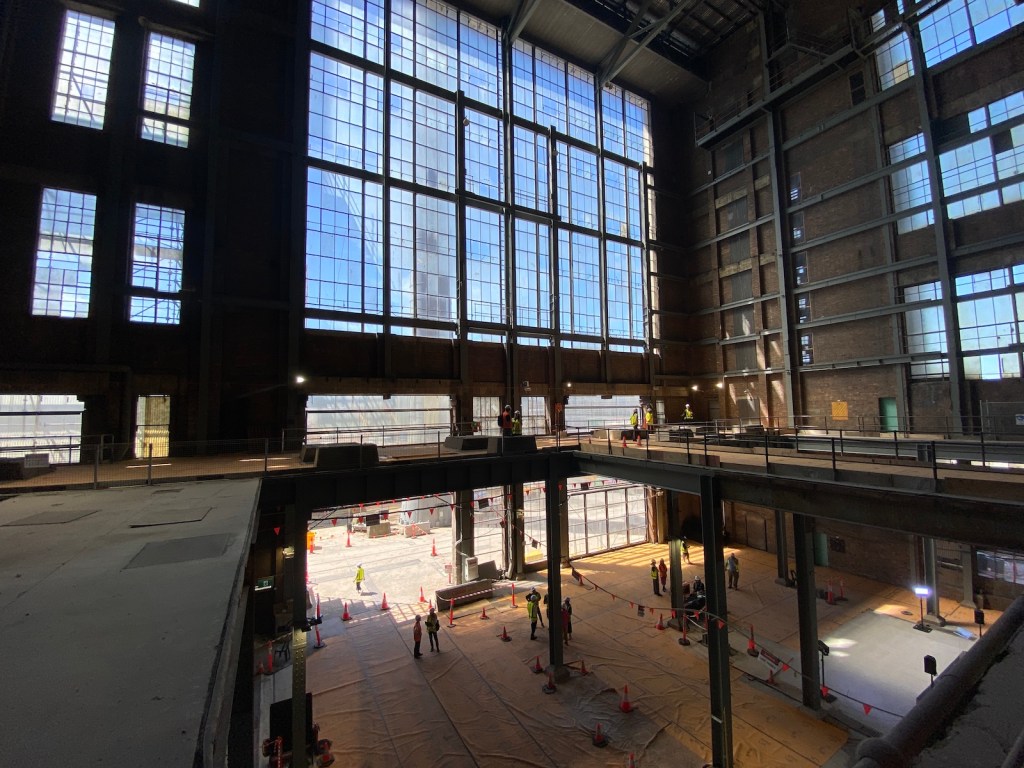
Biggest new venue: Literally the largest, the White Bay Power Station restoration project was unveiled by Placemaking NSW in November. It will open to the public with the Biennale of Sydney in March 2024.
Biggest appointment: Michael Dagostino took a big step sideways this year, taking on the Chau Chak Wing Museum and Seymour Centre. Other noticeable moves in the visual arts, were the return of Robert Leonard to the Institute of Modern Art (IMA) in Brisbane – for a second time, Craig Donarski’s November announcement as the inaugural Manager Arts, Culture and Creative Industries for White Bay Powerhouse, Fergus Linehan taking on Carriageworks, Bree Pickering to steer the NPG and Susi Muddiman taking on the glamour of the Gold Coast and HOTA. And then, the biggest goodbye was to Barry Keldoulis, stepping down from Sydney Contemporary.
Biggest collaboration: In May, Adelaide Festival Centre announced a five-year plan partnership with National Gallery Singapore, for creative collaboration and cultural exchange.
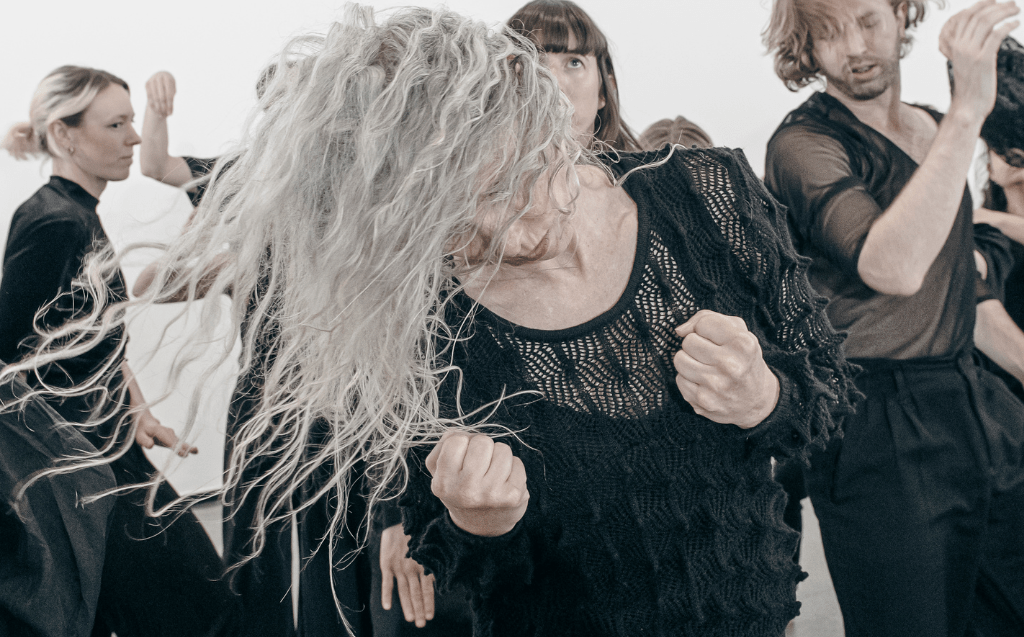
Biggest reposition: A trend we saw in 2023 was a rethink of dance and performance within the gallery setting. A great example was NEWRETRO, an exhibition celebrating 21 years of choreographic practice by Lucy Guerin Inc at the Australian Centre for Contemporary Art (ACCA).
Biggest international tour: In April, QAGOMA announced that it will tour highlights from the Asia Pacific Triennial of Contemporary Art (APT) to London’s Victoria and Albert Museum in 2026.
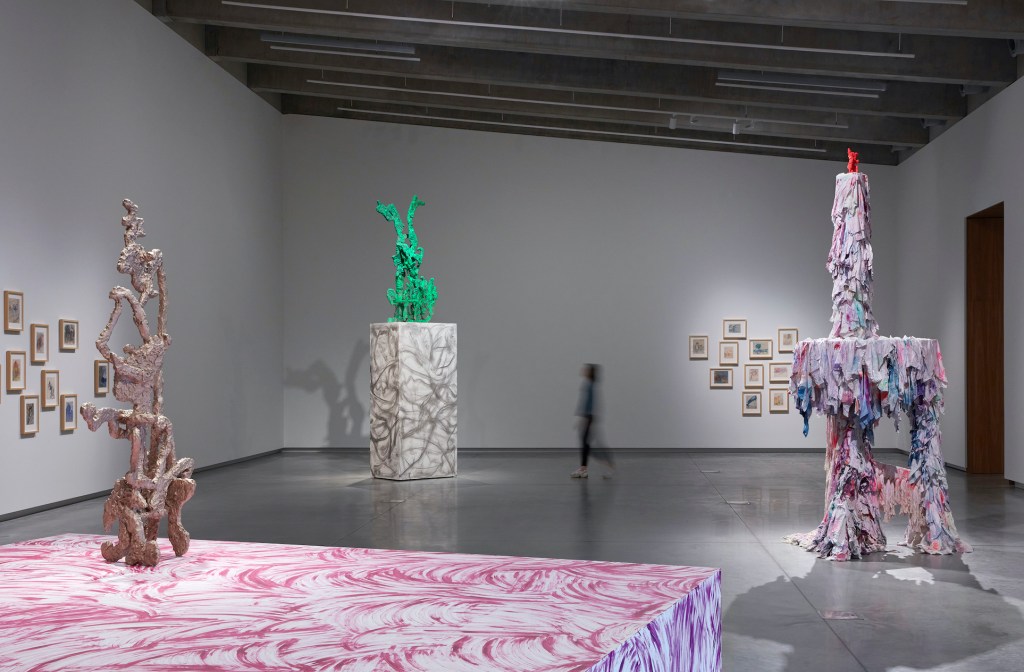
Biggest regional standout: Bundanon on the Shoalhaven River (NSW) kicked off with fantastic forms and closed the year with Miwatj Yolŋu – Sunrise People, works by 13 senior and emerging Yolŋu artists from the Yirrkala Community, proving remote programming can be top drawer.
Biggest newbies: Artist run space in Kiama (NSW) – Seven Marks – is punching high, and people are noticing, while in Melbourne project8 is mashing up the model with some interesting exhibitions.
Curious how the years stack up?
The Big List: the visual arts in 2022
The Big List: the visual arts in 2021
The Big List: the Visual Arts in 2020
The Big List: The Visual Arts in 2019
The Big List: The Visual Arts in 2019
The Big List: what made an impact in the visual arts in 2018
